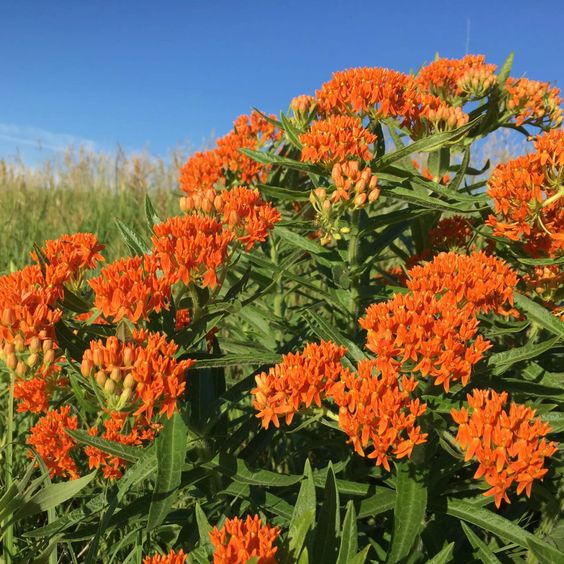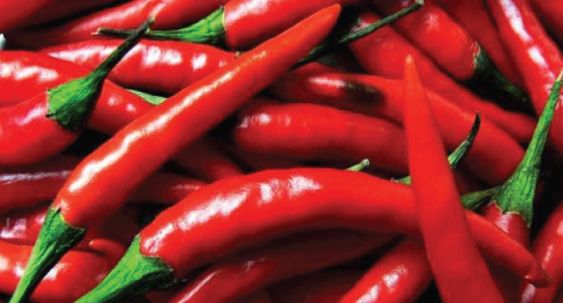Planting Milkweed with Precision: A Smart Agriculture Approach to Monarch Butterfly Conservation
Planting Milkweed,The agricultural landscape is undergoing a significant transformation, driven by advancements in technology and a growing focus on sustainability. Smart Agriculture, a data-driven approach that utilizes precision tools and techniques, is at the forefront of this change. This article explores how Smart Agriculture principles can be applied to the seemingly simple task of planting milkweed seeds. By integrating precision seeding with ecological goals, we can contribute to the conservation of the iconic Monarch butterfly while fostering a more sustainable agricultural ecosystem.
The Plight of the Monarch Butterfly:The Eastern Monarch butterfly population has experienced a dramatic decline in recent decades, primarily due to habitat loss. Milkweed, the sole food source for Monarch caterpillars, has become scarce due to agricultural practices that favor monoculture crops and herbicide use. This scarcity has significantly impacted Monarch populations, disrupting their vital migration patterns.
Contents
Planting Milkweed Smart Agriculture to the Rescue:
Planting Milkweed Smart Agriculture offers innovative solutions to address this ecological challenge. Precision seeding utilizes technology to optimize seed placement, ensuring optimal germination and growth. Here’s how it can be applied to milkweed restoration:
- Spatial Data Analysis: Geospatial information systems (GIS) can identify areas within agricultural landscapes suitable for milkweed establishment. Factors like soil type, sun exposure, and potential competition from other plants can be considered for targeted planting.
- Variable Rate Seeding Technology: Advanced planters can adjust seed distribution based on real-time data. This allows for targeted planting in designated areas without disturbing existing crops, minimizing competition and maximizing milkweed establishment success.
- Data-Driven Monitoring: Sensors and drone technology can be employed to monitor milkweed growth and track Monarch butterfly activity. This data can then be used to refine future planting strategies and assess the overall effectiveness of the program.
Benefits and Objectives Planting Milkweed:
Planting Milkweed,The benefits of integrating Smart Agriculture with milkweed restoration are multifold:
- Monarch Butterfly Conservation: By promoting milkweed growth, we provide critical habitat for Monarch caterpillars, contributing to their population recovery.
- Enhanced Biodiversity: A diverse agricultural landscape with established milkweed populations attracts other pollinators like bees and hummingbirds, improving overall ecosystem health.
- Sustainable Land Management: Milkweed plants can help suppress weeds and attract beneficial insects that control crop pests, potentially reducing reliance on chemical pesticides.
- Improved Soil Health: Deep-rooted milkweed plants can improve soil structure and fertility, benefiting overall crop production in the long run.
Challenges and Solutions:
Planting Milkweed,Implementing a Smart Agriculture approach for milkweed restoration presents certain challenges:
- Cost of Technology: Precision seeding equipment and data analysis tools can be expensive for small-scale farmers. Collaboration and cost-sharing initiatives can help address this barrier.
- Seed Availability: Sourcing native milkweed seeds suited for the specific region is crucial. Developing partnerships with seed banks and conservation organizations can ensure a reliable seed supply.
- Farmer Education: Training on Smart Agriculture techniques and the ecological benefits of milkweed restoration is essential for farmer buy-in. Educational workshops and extension programs can bridge this knowledge gap.
Case Studies: Success Stories in Smart Milkweed Restoration:
Planting Milkweed,Several real-world examples demonstrate the effectiveness of Smart Agriculture in milkweed restoration:
- Midwest Monarch Highway: This large-scale initiative by non-profit organizations and agricultural stakeholders aims to create a corridor of milkweed habitat across the Midwestern United States. Farmers participating in the program utilize GIS mapping and VRT to strategically plant milkweed within their fields, fostering a connected habitat for migrating Monarch butterflies.
- Precision Milkweed Planting Project (PMPP): A collaborative effort between universities, agricultural businesses, and conservation groups, the PMPP focuses on developing cost-effective precision seeding techniques for milkweed establishment on marginal agricultural lands. The project provides valuable data on seed distribution methods and their impact on milkweed growth, informing future restoration efforts.
These case studies showcase the potential of Smart Agriculture to integrate ecological concerns into agricultural practices. By sharing best practices and fostering collaboration, these projects can be replicated across diverse landscapes, creating a network of milkweed havens for Monarch butterflies.
Economic Analysis: Cost Savings and Long-Term Benefits:
Planting Milkweed,While initial investment in Smart Agriculture technology can seem daunting, several factors contribute to its long-term economic viability for farmers participating in milkweed restoration programs:
- Improved Land Utilization: Strategic milkweed planting can optimize land use by converting marginal areas into valuable habitat without impacting crop production.
- Reduced Reliance on Pesticides: Milkweed’s ability to attract beneficial insects can help control crop pests, potentially reducing reliance on chemical pesticides, leading to cost savings and environmental benefits.
- Increased Crop Yields: Diverse agricultural landscapes with established milkweed populations can foster healthier soil conditions, potentially leading to improved crop yields in the long run.
- Potential Incentive Programs: Government agencies and conservation organizations may offer financial incentives to farmers who adopt milkweed restoration practices, further offsetting technology costs.
A comprehensive economic analysis would require region-specific data on technology costs, potential yield benefits, and available incentive programs. However, considering both the ecological and economic benefits, Smart Agriculture for milkweed restoration presents a promising investment for forward-thinking farmers.
Building Partnerships for Success:
Effective milkweed restoration through Smart Agriculture hinges on strong partnerships between various stakeholders:
- Farmers: Their participation and knowledge of their land are crucial for successful implementation. Providing educational programs and financial incentives can encourage farmer buy-in.
- Conservation Organizations: These groups possess expertise on native milkweed species and butterfly habitat needs. They can provide guidance on seed selection, planting strategies, and monitoring protocols.
- Agricultural Technology Companies: Collaboration with these companies can lead to development of cost-effective and user-friendly precision seeding technology specifically tailored for milkweed restoration needs.
Planting Milkweed,By embracing Smart Agriculture principles, we can transform what appears to be a simple act of planting seeds into a powerful tool for ecological restoration. By strategically planting milkweed, we not only contribute to Monarch butterfly conservation, but also foster a more diverse and resilient agricultural ecosystem. By integrating technology with ecological awareness, Smart Agriculture can pave the way for a more sustainable future for both agriculture and the natural world.




